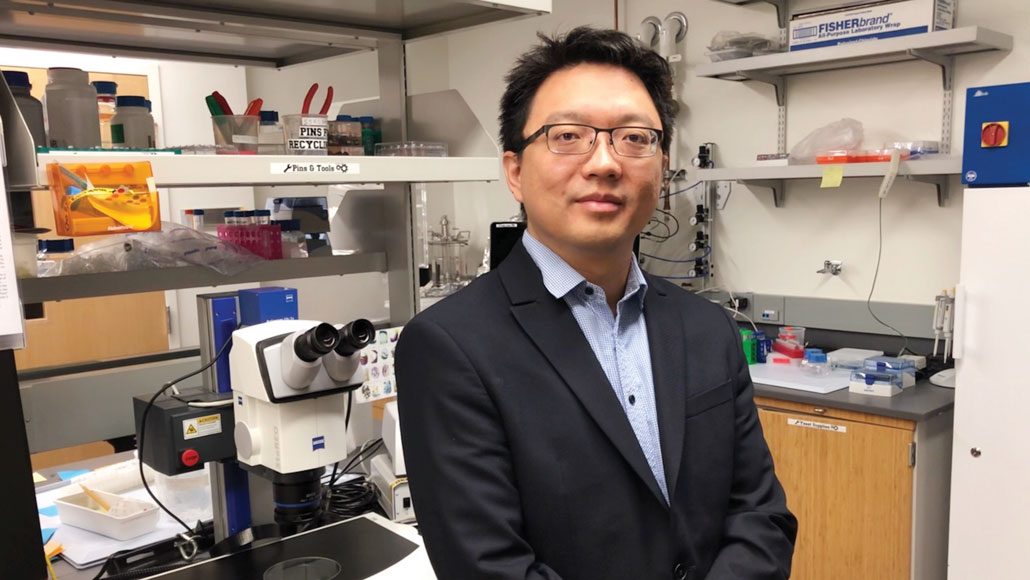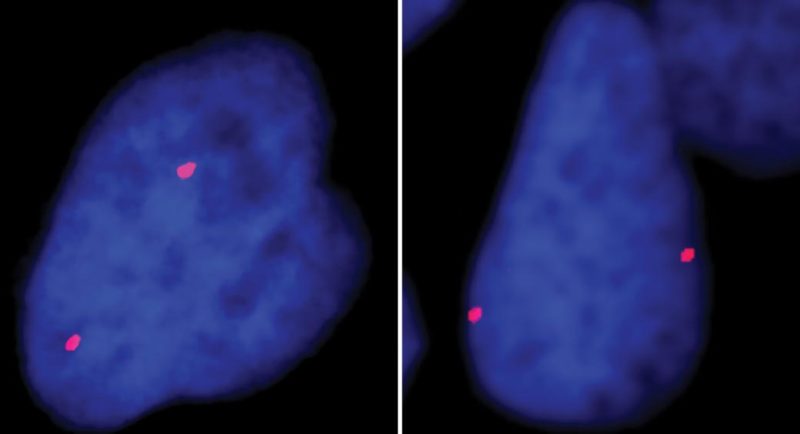
Stanley Qi hopes his editing tools will one day cure genetic diseases. “That’s the real test,” he says.
Courtesy of Stanley Qi
- More than 2 years ago
It might seem that dulling a cutting tool is the last thing an engineer would want to do, but Stanley Qi is no ordinary engineer. By blunting the gene-editing scissors known as CRISPR/Cas9, he made them even more useful — the molecular equivalent of a Swiss Army knife.
CRISPR/Cas9 has become one of the most powerful tools in molecular biology since its introduction in 2012. It is composed of an RNA (the CRISPR part) that guides a DNA-cutting enzyme called Cas9 to specific places in an organism’s genetic instruction book.
As a graduate student, Qi, now 36 and a bioengineer and biotechnologist at Stanford University, disabled Cas9 so it could no longer cut DNA. The result was dead Cas9, or dCas9. Strapping enzymes, fluorescent tags or other molecules to dCas9’s back has created an entire toolbox worth of DNA manipulators. Before dCas9, researchers could use CRISPR/Cas9 only to alter the DNA bases, or letters, within a gene. After Qi and colleagues’ invention, scientists could turn genes on or off, up or down, says Rodolphe Barrangou, a CRISPR researcher at North Carolina State University in Raleigh and editor of the CRISPR Journal.
Qi not only develops the tools, he’s also using them to study how cells sense the environment, how stem cells work and how to take charge of the genetic instruction book, or genome, to one day cure some genetic diseases. “He’s a true synthetic biologist,” Barrangou says.
Qi didn’t start out in biology. The son of two accountants, he grew up in Weifang on China’s eastern coast. Qi’s father had always dreamed of being a scientist, but China’s cultural revolution and other factors didn’t allow him the opportunity to study science. As a result, Qi’s father learned natural sciences on his own. “As I grew up, I was strongly influenced by that kind of hopes and dreams,” Qi says.
Weifang “is famous for its factories,” Qi says, “but there were no good universities there.” So he ended up at Tsinghua University in Beijing, where he studied physics and math. He moved to the University of California, Berkeley to study physics as a graduate student with Nobel Prize–winner Steven Chu. When Chu became Secretary of Energy and shut down his research lab, Qi changed disciplines to study bioengineering. Berkeley’s free-thinking culture, especially how people explore new ideas and fields, influenced him the most, he says. “Even now as I run my lab, I always encourage people to carry this freedom of mind … instead of narrowing yourself to one particular topic,” Qi says.
Qi was intrigued by CRISPR, and soon learned everything he could about the RNA-guided system. It didn’t take long back then. “You could finish reading all the CRISPR literature in 2008 in one hour,” he jokes.
Qi first used dCas9 as a roadblock that sits on DNA in front of a particular gene and prevents other proteins from turning the gene on. He dubbed the roadblock CRISPRi, for CRISPR interference. CRISPRa (CRISPR activation) involved strapping an “activator domain” from another protein to dCas9 to turn genes on. A third tool developed in Qi’s lab at Stanford rearranges how DNA is packed in a cell’s nucleus. Moving around big chunks of the genome with this “CRISPR-GO” tool (GO stands for genome organization) may help scientists better understand what goes wrong in cancer cells and how stem cells develop into mature cells, says Wendell Lim, a synthetic biologist at the University of California, San Francisco.

Researchers have requested Qi’s dCas9 tools more than 6,500 times, he says. But he wants to know, “beyond the research community, can we really help anyone? That’s the real test.”
Qi is guiding his lab toward developing therapies to regulate gene activity to treat various diseases. He’s already collaborating with neurologists to tackle diseases of the nervous system, such as devising schemes to one day restore dopamine production in the brains of people with Parkinson’s disease.
Before Stanford, Qi was a faculty fellow at UC San Francisco. He recalls feeling as if he didn’t quite fit with the medical school faculty, because he wasn’t trained in biology or medicine. He took his concerns to Lim, who offered some advice that Qi has embraced: “You want to be close to biologists, but you probably don’t want to become a biologist,” Qi recalls. “Just be yourself.”







